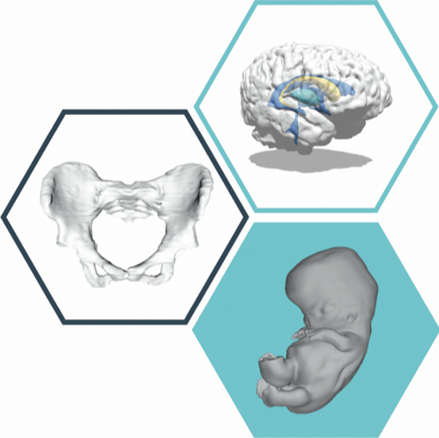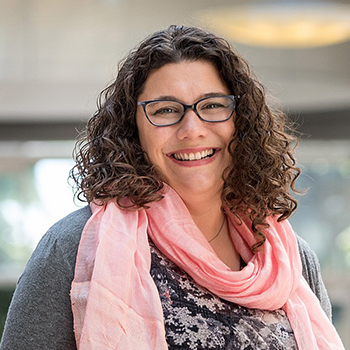The HIVE – Creating for the future of medical education

Medical education is constantly evolving as we try to prepare our students for a changing health care environment and the increasing body of knowledge in the medical sciences.
Technological Advances
Technology has become an important tool in addressing some of the challenges we face in the classroom and over the past years there has been an explosion in the tools and possibilities we have to better prepare our students. We have been leveraging the power of these technological advances to create resources that will address some of the challenges we face in medical education: (1) providing high quality content that is accessible anytime and anywhere and (2) creating content that helps with a 3D understanding of complex anatomical relationships.
Hackspace for Immersive Virtual Experiences

The HIVE (Hackspace for Immersive Virtual Experiences) was funded through the UBC Faculty of Medicine’s Strategic Investment Fund. It is a multidisciplinary space where teams of students and faculty collaborate to develop with emerging technologies to enhance the student classroom experience. The team brings together undergraduate, health professional and graduate students from various disciplines ranging from engineering to biomedical sciences, health professions and the arts.
The team works collaboratively to find technological solutions for a pedagogical question. The 3D team is focused on the development of 3D learning solutions using virtual and augmented reality. The 3D objects for these applications are acquired through 3D reconstructions from imaging scans, 3D scanning, or 3D modelling. The 2D team is focused on the creation of interactive learning modules, videos and animations for both www.neuroanatomy.ca and www.clinicalanatomy.ca. One of the key discussion points for the teams is to determine which technology best suits the challenges encountered in the classroom – it is always the technology that serves the pedagogy.
The HIVE works very closely with the UBC Emerging Media Lab, a dedicated group here at UBC that brings together students, faculty and industry to jointly develop new and emerging technologies for the educational experiences of our students.
Over the course of my career teaching anatomy at UBC I have always struggled with the best way to help my students understand the complex 3-dimensional relationships of structures in the human body. In particular, I have seen learners struggle with understanding the anatomy of the pelvis, the brain, and embryology. Targeted dissections can only provide a snapshot of one particular aspect of one particular structure and cross-sectional anatomy as seen in brain slices or CT and MRI scans, requires a good 3-dimensional understanding for orientation and ultimately diagnostic approach. Our first step towards the creation of 3D learning resources was through a collaboration with Microsoft and their Garage internship program. Together with a team of graduate and undergraduate students from UBC we collaborated to create a holographic neuroanatomy lecture, the HoloBrain for use with the HoloLens. This interactive, 3-dimensional, augmented reality (AR) app for the HoloLens has the potential for providing students with a truly innovative approach to a thorough understanding of neuroanatomy. The HoloLens allows for the visualization of a 3D object and it allows people to collaborate on the same visualization – this collaborative aspect is one of the keys to the success of this technology. Since the HoloBrain project we have continued the exploration of 3D visualizations for medical education: we are currently collaborating with the Faculty of Dentistry on some complex areas of the head and neck – such as the pterygopalatine fossa, we are part of a cross-institutional collaboration to create effective learning resources for the pelvis and perineum, and we have started a project for the visualization of key aspects of embryological development. We are currently developing the technology for a first customized, interactive 3D lecture for both head and neck and neuroanatomy in the fall in a large classroom.
The more traditional 2D media we develop are an open educational resource that is used across disciplines here at UBC and around the world. We have created a library of digital illustrations that we can use in our interactive learning modules. Providing an open library of resources will allow learners to access materials not just to prepare for one specific class, but rather these resources become part of a learning ecosystem, which fluidly integrates the acquisition and application of knowledge inside and outside of the classroom with experiential learning in both laboratory settings and the workplace. These digital resources are always available for students to come back to. All resources are co-created with students and in a multidisciplinary team – this assures that the resources will meet the needs of our students and are targeted towards the areas students need the most support in. We survey our classes to get feedback about the educational needs and we evaluate the impact of the resources we create. So far, our resources have received some of the highest ratings by UBC students as they see the impact on their learning outcomes as well as the flexible use throughout all educational settings.
Working together with enthusiastic, multidisciplinary teams of students and faculty is one of the most rewarding experiences for any educator. The HIVE leverages the power of the team and the power of technology to innovate for the benefit of our students. As technology continues to expand, in particular the processing power for visualizations of complex structures and datasets, these technologies will become more mainstream. In the HIVE we are developing for this future – it is important for the university to be at the forefront of this development so that the resources we create meet the needs of our students and are grounded in research and scholarship.



